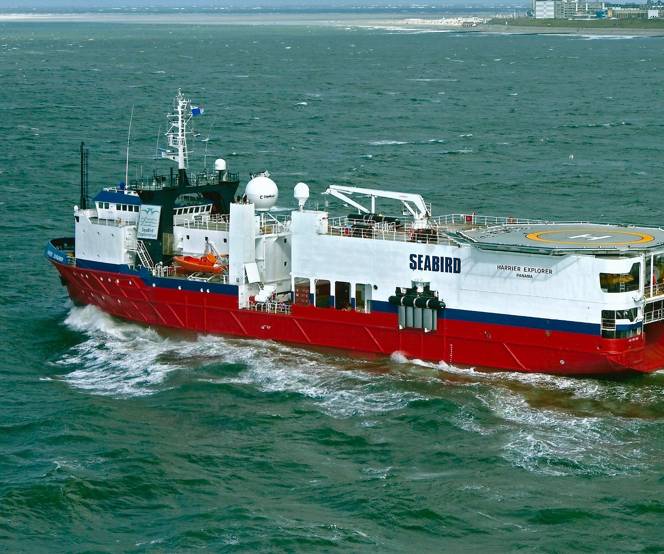SeaBird wins two new survey deals, mulls vessel capacity expansion amid increasing demand

[ad_1]
Seismic acquisition provider SeaBird Exploration has been awarded two new contracts, one for a 3D survey in West Africa and another one for an OBN survey in the Gulf of Mexico. Due to an increasing demand for its services, SeaBird is considering vessel capacity expansion.

The company said on Monday it had received a letter of award for a niche 3D survey in West Africa, with a total value of approximately $6.5 million. The survey is expected to start in the second quarter of 2019, with a total duration of about 80 days. The total duration includes associated vessel transit.
Due to fleet positioning and other contract opportunities, SeaBird will time-charter the Nordic Explorer vessel for this survey and will also bid the Nordic Explorer for subsequent opportunities in the second half of 2019.
In connection with the charter agreement, SeaBird will receive nine kilometers of ION DigiSTREAMER from the owners of the Nordic Explorer.
Gulf of Mexico gig
Furthermore, SeaBird has secured a source contract for an OBN survey in the Gulf of Mexico. The contract has an expected duration of three weeks and will start in early April.
SeaBird’s Harrier Explorer has been working on this survey since February 2019, under a previously announced contract. Harrier Explorer will now be joined by the Osprey Explorer, which recently completed other work in the region, for a period of simultaneous source operations.
Separately, SeaBird has also agreed a 21 day off-hire period for the Voyager Explorer related to a technical stop in January 2019.
Increasing demand leads to capacity expansion
SeaBird said it is seeing increasing demand for its services within the source vessel, 2D and niche 3D markets. In 2018, total duration on received tenders was up 52% compared to 2017, and the company experienced a 40% increase in days on contract in the same period. Rates on new contracts across the three operating segments are as a result up 15-30% year on year.
As a consequence of increased demand in all regions, SeaBird turned down work in the first quarter of 2019 due to scheduling conflicts based on its current fleet capacity of four operating vessels.
To be able to pursue a strong and diversified pipeline of contract leads in all segments, the company is evaluating several attractive opportunities for vessel capacity expansion. This includes an option to add the BOA Galatea and BOA Thalassa to the operational fleet, which are currently owned by BOA SBL AS, a subsidiary of BOA Offshore.
According to SeaBird, these vessels are well suited for source and 2D operations, as well as EM seabed logging, for which BOA Thalassa is currently contracted with EMGS until September 2019, with options to extend for three times six months. SeaBird has received irrevocable acceptances from a majority of Boa SBL bondholders for a sale of the vessels based on an en bloc valuation of NOK 185 million.
In addition, the company is considering entering into other negotiated charter arrangements for capacity expansion at flexible terms.
SeaBird emphasized that no binding decisions have been made regarding any capacity expansion at the current stage and the company is evaluating the alternatives. SeaBird will only enter into binding agreements at structuring terms accretive to current shareholders.
Spotted a typo? Have something more to add to the story? Maybe a nice photo? Contact our editorial team via email.
Offshore Energy Today, established in 2010, is read by over 10,000 industry professionals daily. We had nearly 9 million page views in 2018, with 2.4 million new users. This makes us one of the world’s most attractive online platforms in the space of offshore oil and gas and allows our partners to get maximum exposure for their online campaigns.
If you’re interested in showcasing your company, product or technology on Offshore Energy Today contact our marketing manager Mirza Duran for advertising options.
Source link







